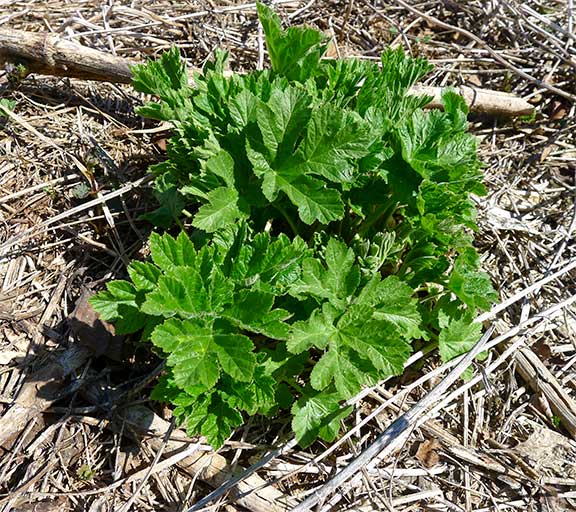
Cow Parsnips Ready for Harvest. Photograph by Laurie Constantino
Young cow parsnips shoots and leaves have wonderful flavor. When prepared correctly, they’re a highly desirable wild edible.
I can hear the groans now. “Cow parsnip is a horrible plant.” “I’m allergic to cow parsnip.” “Cow parsnip stinks.” “Cow parsnip is the curse of the trail.” “Avoid it at all costs.” All of this is true.
If you’d asked me a couple weeks ago about eating cow parsnip, I would have said nix, nein, no, huh-uh. It turns out, when I gave it a chance, cow parsnip tastes really good. Desirably good. Worth the effort to find and harvest good. At least, fresh shoots do. I’m not experienced enough to render an opinion on more mature specimens. Not yet, anyway. I’ll keep trying them and reporting back as summer progresses.
Cow parsnip (aka Heracleum maximum, Indian Celery, or Pushki) isn’t like garden parsnips, though is a member of the same family. The good news is it’s edible and tastes good. The bad news is cow parsnip sap and outer hairs contain a chemical called furanocoumarin. When combined with sunlight, furanocoumarin can cause severe blistering, pain, and burning. I once got a bad cow parsnip burn that left me susceptible to bad reactions even on overcast days. I’ve spent years staying as far away from cow parsnip as possible.
Despite my aversion, I’ve known for years that cow parsnip is edible and have grown increasingly curious about its flavor. I often get asked about it when teaching wild edibles classes or leading plant walks. This year I resolved to overcome cow parsnip phobia. It’s lushly green and vital, grows in wild abundance, and is obviously easy to harvest and clean. I proceeded, but with caution.
Gloves are an absolute necessity when harvesting and handling cow parsnip to prevent furanocoumarin from touching bare skin. For the same reason, I also recommend wearing long sleeves and covering legs. Harvest cow parsnip when it’s 6”-8” high. Use scissors or a knife and cut shoots as far underground as is necessary to harvest the entire shoot, including the shoot’s white underground portion.
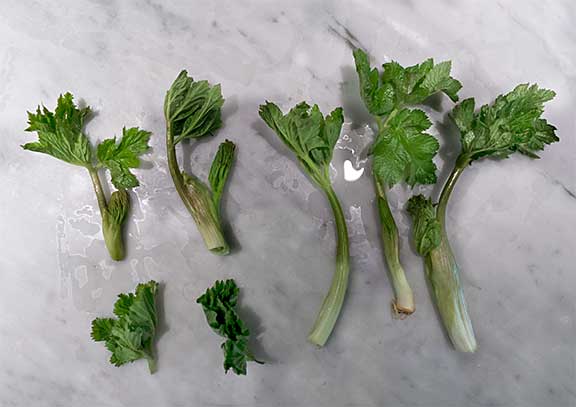
Three Ways of Harvesting Cow Parsnip; cuttings all taken from same plant on same day. Clockwise from Bottom Left: Leaves only, leaves and above ground stem, leaves and below ground stem. The below ground stem has the best flavor, so should always be harvested. Photograph by Laurie Constantino
Many field guides warn against confusing edible cow parsnip with poison water hemlock. Although both plants have big white flower heads, in all other respects they seem very different to me. Nonetheless, before harvesting cow parsnip (or any other wild plant), be familiar with the characteristics of all similar plants. Only eat plants you can positively identify, and always remember the most important rule of foraging: “When in doubt, throw it out.”
My first cow parsnip harvest was only a few shoots. This is the best practice with any new-to-you plant, wild or not, to make sure you like it and it agrees with you. I blanched them in boiling salted water for 2-3 minutes, and then tossed the cooked greens with finely diced onions and soy sauce. This was very tasty and, more importantly, didn’t make me sick.
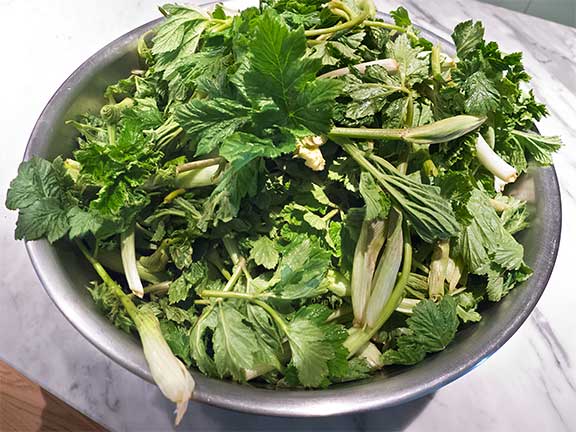
Washed cow parsnip ready for trimming tough or damaged stems, leaves, roots. Photograph by Laurie Constantino
With edibility and palatability confirmed, I returned to the fields and harvested a giant mound of cow parsnip shoots. Back at home, I let them soak for 30 minutes in a sink full of cold water laced with 1 cup vinegar. Doing so kills lingering bacteria, especially important when harvesting in areas where animals, wild and domestic, may have been (in other words, pretty much everywhere in Alaska).
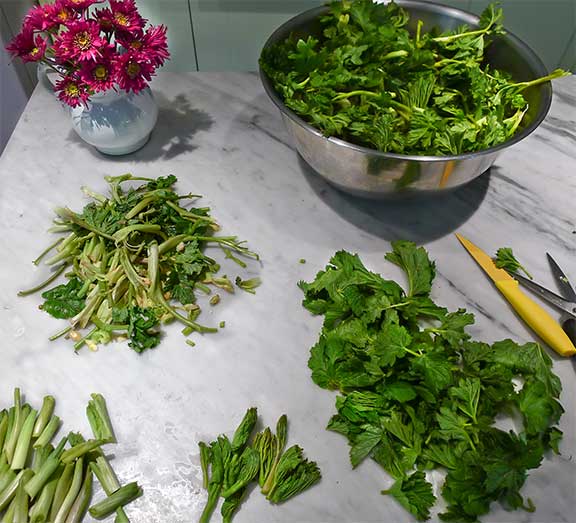
Breaking Down Cow Parsnips. Clockwise from flowers: Whole cow parsnip shoots, leaves only, base of stems only, debris from cleaning cow parships. Photograph by Laurie Constantino.
I
F
First, I used whole cow parsnip shoots to make traditional Greek Horta, boiled greens dressed with olive oil and lemon, one of my favorite salads. Since cow parsnip leaves are tender compared to the bulbous leaf “bud” at the base of each stalk, I also treated some leaves and stalks separately. With leaves only, I made cow parsnip chips, using a simple kale chip recipe. With the multi-layered leaf buds, I roasted them as I’d roast asparagus.
All three versions were wonderful. Worried I’d gone so far over to the dark side that I falsely believed cow parsnip was delicious, I brought some to my dentist appointment for everyone there to taste. Before I said what they were eating, the dentist and his staff tasted all three versions, and really liked them. When I disclosed they were exclaiming about the deliciousness of cow parsnip, all were impressed and amazed. More importantly, everyone kept eating and wanted me to leave the leftovers for them to finish.
Today’s recipe is for Greek Wild Greens with Lemon Dressing made with cow parsnip. I’ll post recipes for Oven-roasted Cow Parsnip and Cow Parsnip Chips in the next couple days. Try them all! Who knows, you might throw off the reins off loathing and join my ranks as a cow parsnip lover!
I’m curious if any readers have cooked with cow parsnip and, if so, how they were prepared? Did you like them? Right now, I have access to more cow parsnip than we could ever eat. I know I’m going to use them, along with other wild greens, to make Hortopita (think Spanakopita made with wild greens). Does anyone have any suggestions or requests for new cow parsnip dishes? I’m ready and happy to keep experimenting, so all suggestions welcome.



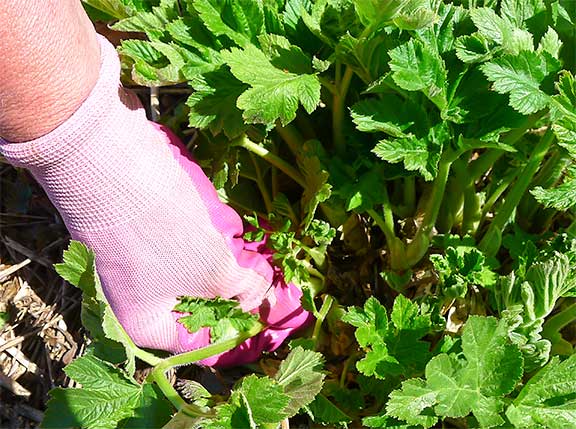
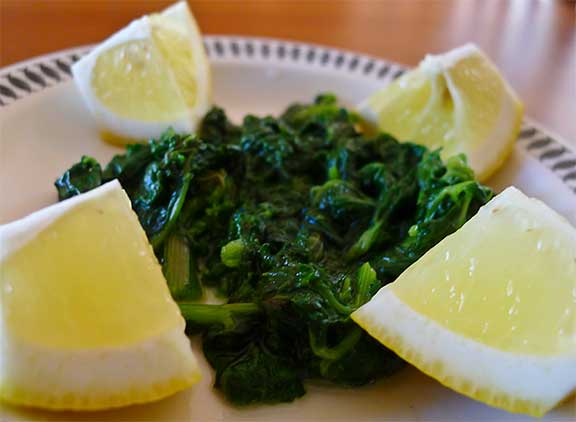
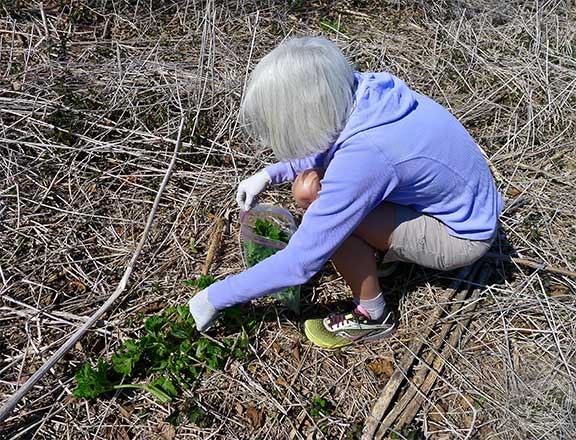
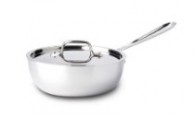


Pingback: 31 Wild foods to forage in May | A Magical Life
Pingback: 31 Wonderful Wild Edible Foods to Forage in May – A Magical Life
Pingback: Nature, the Outdoor Pantry - KaTom Blog
Pingback: How to Identify Poison Hemlock – TUTORING YOU